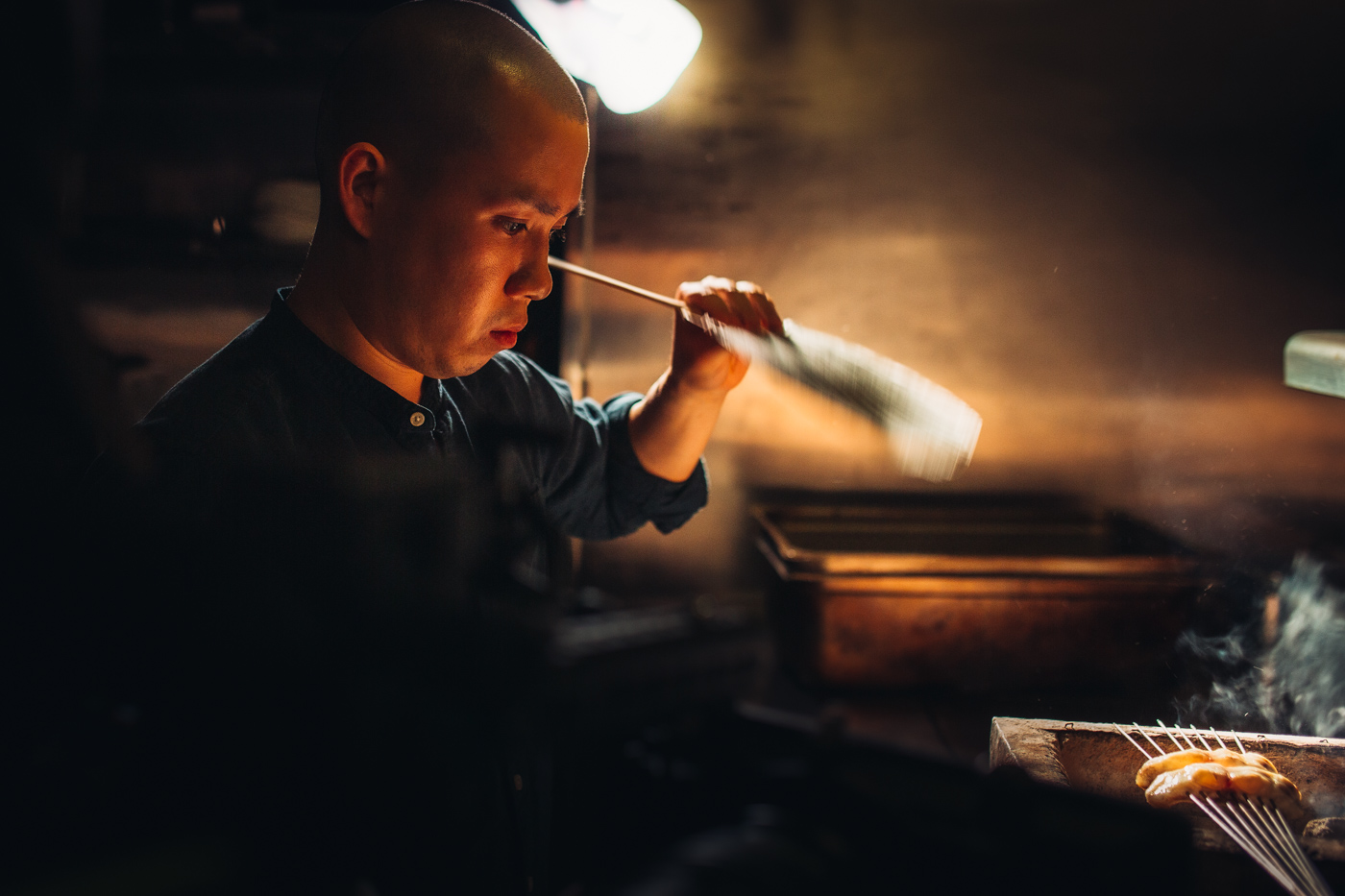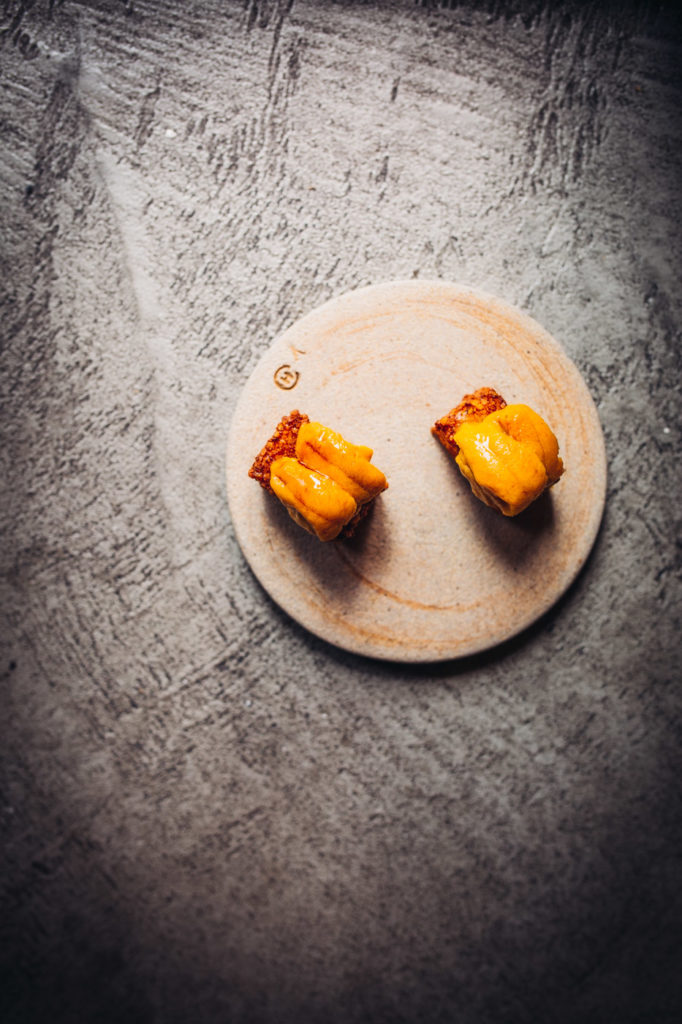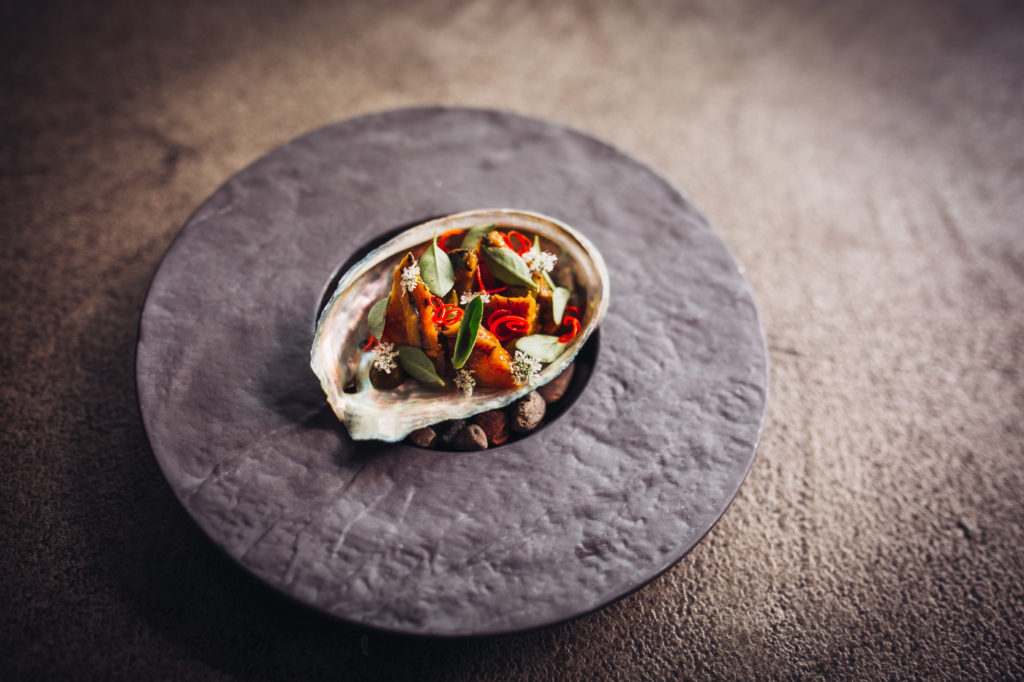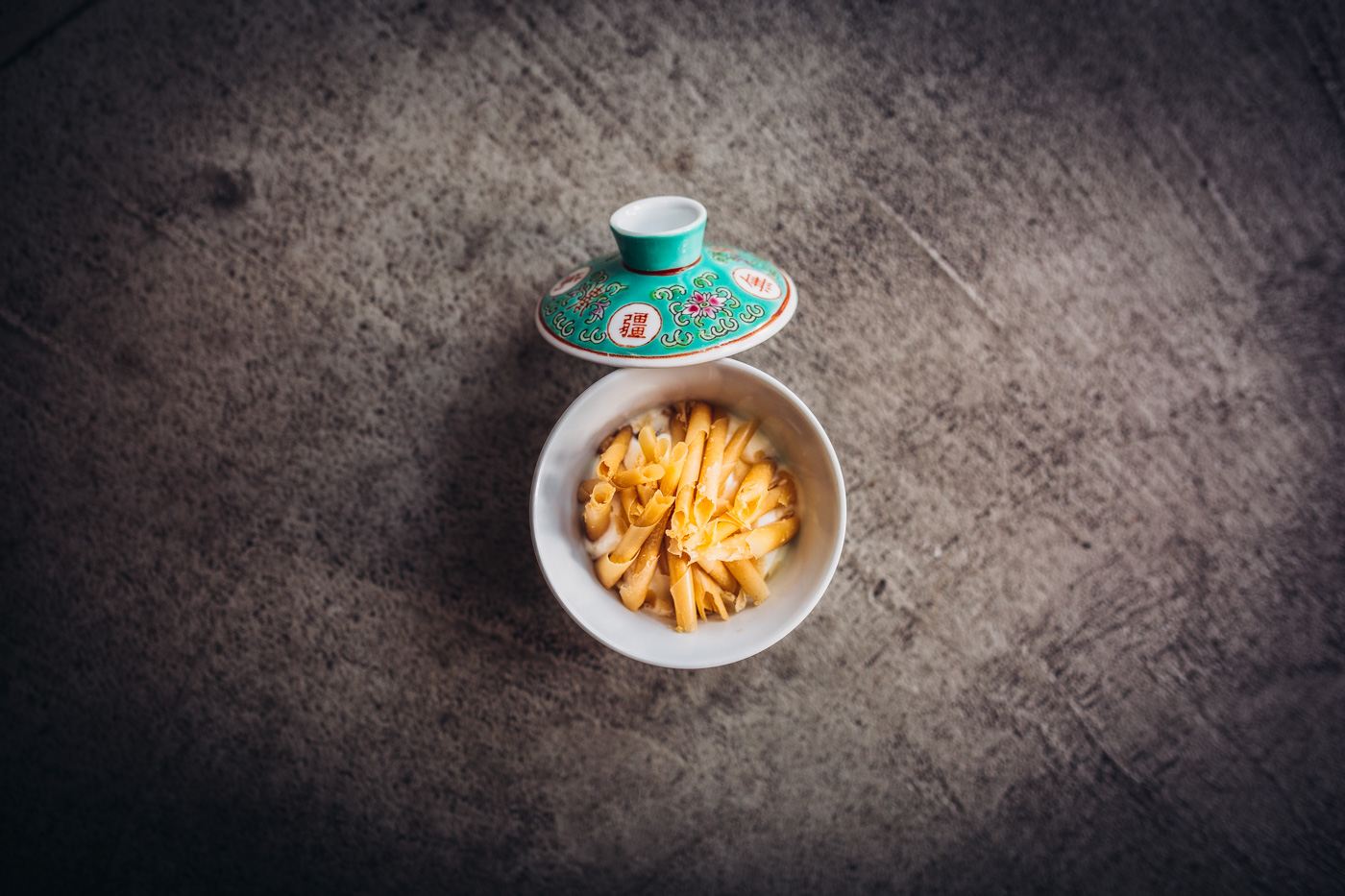Jon Yao of Kato Finds Confidence in the Flavors of His Taiwanese Upbringing
Los Angeles’ Kato Restaurant, where the dishes are edible mnemonic devices for Asian Americans, is an homage to Chef Jon Yao’s Taiwanese heritage.
This story is published in partnership with KCET / PBS SoCal.
Jon Yao got off to a prodigious start in the limelight. In 2016, his parents leased a place in a strip mall in Santa Monica with the intention of creating a fast-casual, lunchbox joint for UCLA students. Instead, Yao — then 25 years old — took it over and opened his restaurant, Kato, which immediately drew attention for its ambitious and photogenic plates, like a buttermilk pudding adorned with rose ice and smoked hamachi with scallion oil.
Squeezed into a 970-square-foot space with a smart tasting menu, it was heralded as a broadly Asian restaurant with Taiwanese, Chinese, Californian and Japanese influences. “It was still representative of who I am, but less focused,” he says. “Halfway through, I served my mom’s steamed fish, and it was well-received by our guests. That gave me confidence in the flavors of my childhood.”
His newfound confidence paid off, and in 2019, Yao snagged a coveted Michelin star for his simple, yet elegant fare. Five years since his arrival on the scene and now inching into his 30s, Yao has evolved from a talented newcomer on the block to one of Los Angeles’ most accomplished chefs. “When you first start out, you’re unaware of how naive you are,” he reminisces.
Yao didn’t come out of nowhere. He had previously staged at Benu and COI in San Francisco, and was planning to head to Copenhagen for more work experience when his parents told him about the Santa Monica space. He decided to stay, took a gamble, and it proved to be worth the risk.

Today, Kato’s tasting menu is more distinctly focused on the Taiwanese and Chinese flavor profiles Yao grew up with in suburban eastern Los Angeles. There’s a skew toward seafood in his choice of ingredients, which is appropriately reflective of Taiwan’s island fare. He takes dishes that are familiar to Taiwan, like tapioca with milk tea or three cup chicken, and throws his own spin on them. For the former, tapioca is deep-fried into a fritter, seasoned with a brown butter emulsion, and topped with a creamy slab of uni. It’s reminiscent of brown sugar boba milk tea, a popular beverage in Taiwan. And for the latter, abalone is steamed and smothered in a three cup jam, garnished neatly with Thai basil. The abalone has the same chewy texture as the snails used in Taiwanese Hakka stir-fry dishes.
Yao’s food isn’t a straight photocopy of the classics, and that’s part of the charm. He’s adept at deconstructing, isolating essential flavor profiles, and then reassembling them into his own interpretation. The final product embodies the spirit of the original dish, yet looks completely different. Other times, he’ll just take ingredients specific to his heritage, like geoduck (“a giant clam with a huge trunk on it”), and generate an entirely new dish. In the case of the geoduck, it’s broken down into a chowder with inoculated koji, and then topped off with a generous heaping of Kaluga hybrid caviar from China. “We’ll also add cubes of celtuce,” he says, referring to the stem of a variety of lettuce prized for its buttery, umami kick.
Taiwanese shacha sauce is another recurring element at Kato — a savory satay sauce made with a blend of shallots, garlic, oil and dried seafood. Yao embeds the sauce in rice and layers it with a soy-marinated sablefish.



Yao stresses that they’re not reinventing the wheel at Kato. “We’re not really elevating anything, objectively speaking. Flavor is pretty subjective. I’m just adjusting dishes to how I like them,” he says. Raised in Los Angeles by Taiwanese immigrants, Yao draws inspiration primarily from his mother — a self-taught home cook from Taipei. “My mom moved to the States when she was really young. She was teaching herself a lot of cooking from her own memory,” he says.
I ask Yao if he considers his food Taiwanese, a mix of Chinese and Taiwanese, or if it’s important to him to make a distinction between the two. “Taiwanese food is really influenced by Chinese food,” he says, noting he prefers not to dive into the identity politics between the two places. In Taiwan, his family is considered waishengren, a term that refers to migrants to Taiwan who moved over from China between the end of World War II and around the end of the Chinese Civil War. His grandparents were born in the Jiangsu and Anhui region of China, provinces known for their light and elegant fare. Both generations have greatly influenced his cooking.
“But I’m also so far removed from Asia,” he points out. “I’m definitely Asian American.”
A byproduct of Asian American enclaves of Los Angeles, Yao grew up in the city of Walnut, a suburb in the San Gabriel Valley surrounded by some of the best Asian food in the country. “I still go eat in the San Gabriel Valley every weekend,” he says, as he begins listing off some of his favorite establishments. “I really like Kang Kang,” he says, referring to an old Cantonese-style diner in Alhambra. He’ll also stop at Summer Rolls for fresh Vietnamese fare, Bistro Na’s for a spicy Bún bò Huế, and finish off with a chilled grass jelly dessert at Meet Fresh.

Similar to how his mother used memory to inform her cooking, Yao now uses his cooking to elicit memories. The dishes at Kato are edible mnemonic devices for other Asian Americans. The steamed fish dish, for example, might trigger memories of other childhood dining tables, where fresh, whole-steamed fish with soy sauce and thin slivers of scallions were also the norm. “I’m using the Asian American experience as a reference point,” he says. Kids who grew up with a similar subculture can taste their own heritage in Kato, but the menu is approachable enough that a diner who has never ventured to that part of Los Angeles could enjoy it. “Food is a good medium for empathy,” he says.
Now Yao isn’t alone in his embrace of Taiwanese fare; Taiwanese food has been on the rise in the last couple of years. There’s been an influx of second-generation Taiwanese restaurants in America lately, like Pine & Crane in Los Angeles for their fast-casual concept, New York City’s 886 with its beer-friendly fare, and Win Son in Brooklyn with its large, shared-plates. The growth of these restaurants has generated a newfound interest in Taiwanese-specific foods, and Yao says he’s happy for the company. “It’s cool to have this new community to engage and converse in,” he says. “That’s my goal for everyone — for all these Taiwanese restaurants to band together. It’s just having a bigger pool of knowledge.”

He’s come a long way since Kato first opened, and while he’s won approval from some of the most prestigious food organizations and publications in America, he says that his toughest critics are Asian parents. “They either think my food is not good enough or too expensive. We get tables like that every night,” he says. “So if we can make an Asian grandma happy? Fuck yeah, score.”






Our comments section is for members only.
Join today to gain exclusive access.